Rob Evans' 4mm locos and rolling stock
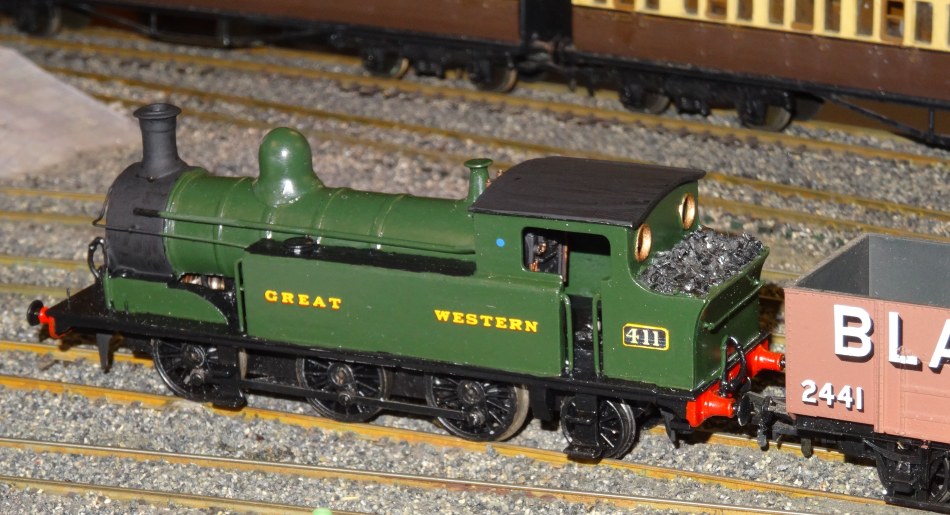
Taff Vale O3 class 0-6-2T. Further details are given on Rob's RMweb thread.
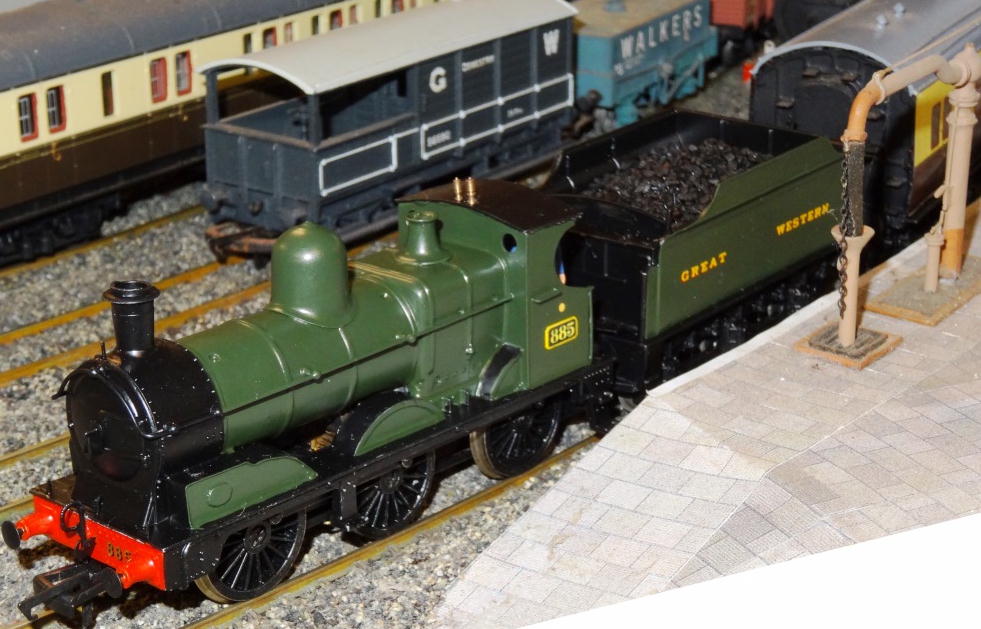
This Cambrian Railways class 73 was converted from a Hornby Dean Goods loco, and full details of this build can be found on Rob's RMweb thread.
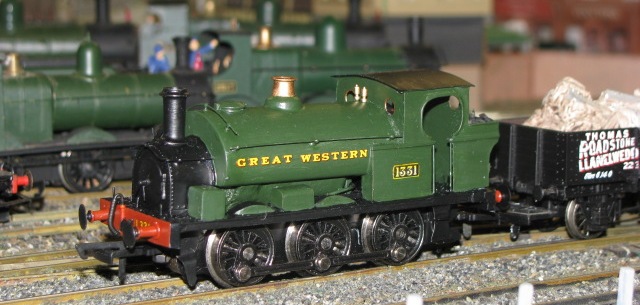
Some of the backwaters of the GWR had some unique and interesting locomotives. One of these was GWR No 1331. Built by Fox Walker for the Whitland & Cardigan Railway in 1877 as their No.3, it became GWR 1387 when the W&C was absorbed by the GWR in 1886. It was rebuilt with longer frames in 1896 and then transferred to departmental stock in 1902, working at Reading Signal Depot until 1925. It was again rebuilt in 1926–7, emerging as 1331. It then worked at Weymouth for several years, being equipped with a bell for roadside working. It was sent to Oswestry in 1941 to work the Porthywaen Sidings (without the bell or front step). It was withdrawn from Oswestry Shed in 1950. This attractive little saddle tank engine may be constructed from an Agenoria kit, but in this case has been assembled from a working chassis from a Hornby "Toby", together with the saddle tank, smokebox, footplate and backhead from a Hornby "Smokey Joe" body. The remainder is a mix of commercial and scratchbuilt components. Details of its construction are given here.
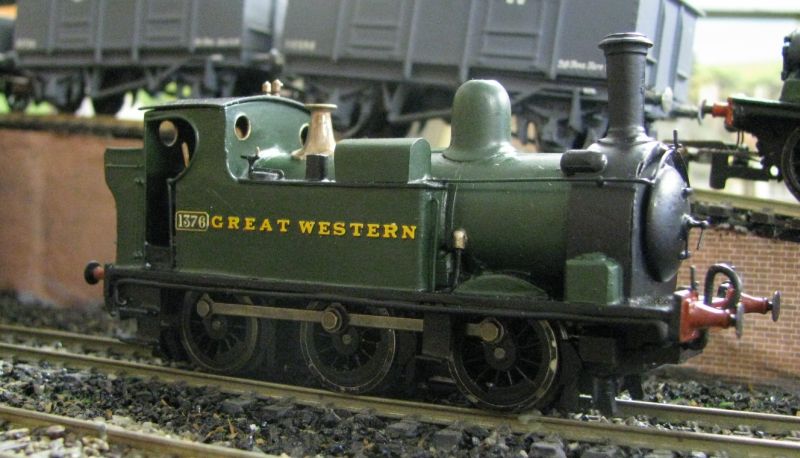
Rob Evans' transformation of a Hornby 'Terrier' chassis, together with a body soldered together from copper and brass, and a few commercial fittings, into 1376, the last surviving loco built for the Bristol & Exeter Railway. The loco lasted long enough to be transferred post-grouping to Oswestry to work the Tanat Valley line. She was scrapped in 1934. The saga of the construction of the model is given on RMweb. The loco has been modelled from photographs only, as no drawings were available.
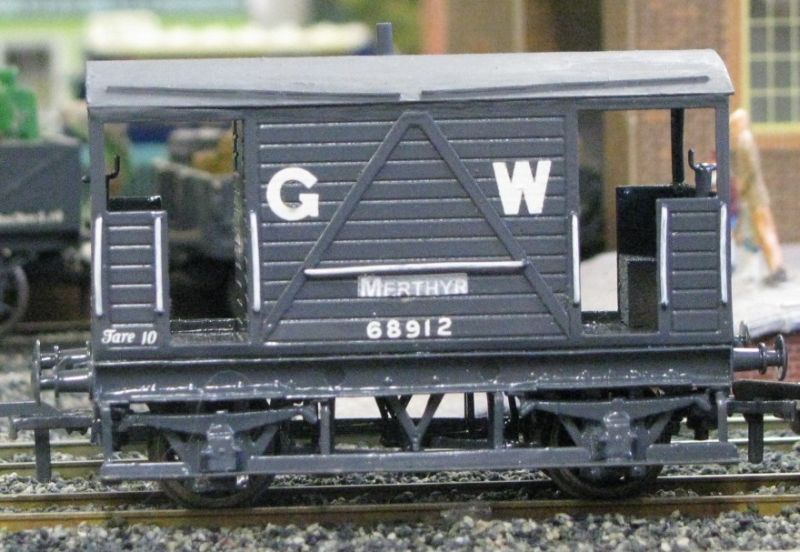
Rob's model of a Taff Vale brake van as running in GW livery, based on a Falcon Brass etched kit. The construction of the model, with some historical discussion, is detailed on RMweb. Another peek of this van can be found at the bottom of this page.
More examples of Rob's work can be found on the Cambrian pages. The story of Rob's 'Camarthen Junction' Engine Shed is being detailed on RMweb.
ex-M&SWJR 4mm models
Robert writes: As a lifelong modeller of the GWR, I have a substantial collection of GWR and BR(W) locos and rolling stock. Most of the standard items are now readily available. However, to make my collection a little different, I have chosen to supplement these with some from the "absorbed" railways. The latest project, stimulated by an enquiry in Model Rail Forum, has made use of many items sleeping in my scrapbox, and I now have a small branch-line train suitable for the 1923–1930 period with matching loco and coaches which looks quite different from the more common 45xx plus B-set or 48xx with autocoach.
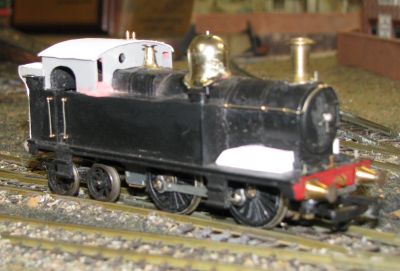
This ex-M&SWJR 0-4-4T No 23 was converted from an old Triang Jinty, generally in accordance with the article in Railway Modeller, January 1978. The donor model was one given to me, which had a non-working X04 motor, 18mm Romford wheels and gears and non-working plunger pickups. In short, she was very sad!
The chassis was stripped back to the cast block, which had a slot for a Magnadhesion magnet at its rear. Much of the block was carved away to make room for the bogie wheels, largely as per the article, but with one significant departure: the bogie design.
I chose to use a bogie frame recovered from a non-working Bachmann H0 "Jupiter" 4-4-0. This included a lovely spring and pivot system which was ideal for No.23. A thin sheet brass mounting was fabricated which was screwed to the chassis using the original rear pickup plate 8BA screw hole. A rectangular hole was carefully opened up for the bogie pivot to slide in. The old magnet slot in the chassis block was then enlarged to give sufficient room for the bogie to move up and down and from side to side. 12mm diameter. Romford/Jackson wheels were fitted to the bogie frame.
21mm dia Romford driving wheels were installed, together with a Mashima open-frame motor, Finecast brass gearbox and nylon gears. New pickups were fabricated from printed circuit board and 0.3mm dia nickel silver wire wipers. The chassis was tested under power on my layout and adjusted until it was reliable through curves and points in both directions.
The body was stripped and rebuilt generally in accordance with the RM instructions. The templates in the article for the card overlays for cab and bunker were very handy.
Once all testing and adjustment was complete, the model was painted with Humbrol enamels and lettered with suitable HMRS Pressfix transfers.
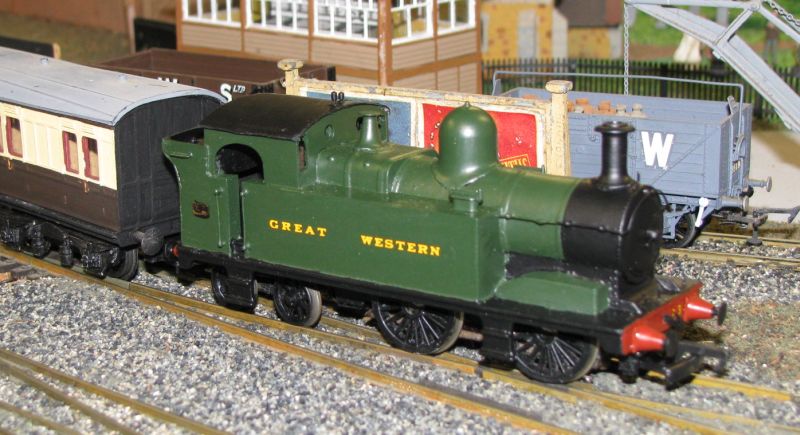
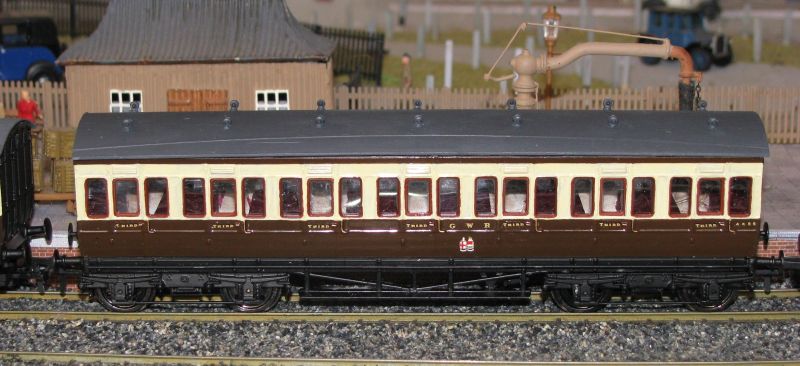
Ex-M&SWJR all 3rd No 4496
The ex-M&SWJR all 3rd No 4496 was built from a Ratio kit of an MR 8-compartment all 3rd. The sides were shortened by one compartment (25mm) and then a 12.5mm slice was removed from each end of the floor and roof. I discarded the 10' wheelbase MR bogies and used 8' wheelbase LNWR ones from the scrapbox, left over from an earlier conversion of another Ratio coach. Wheels are Hornby 14mm disc, running in Romford brass bearings.
Compartment partitions were made from card and seats from balsa. Torpedo ventilator positions were adjusted from those moulded into the roof and then drilled. As this model was to represent an electrically lit coach, I left off the gaslight vents.
New brass coach buffers were fitted.
The interior walls and partitions were painted with Gloy teak colour. Seats were Humbrol crimson lake. Droplights were Humbrol bauxite. Chocolate and cream were from Precision Paints (tinlets bought in the UK in 1975 and still going well in 2012!). Transfers were from the HMRS Pressfix range.
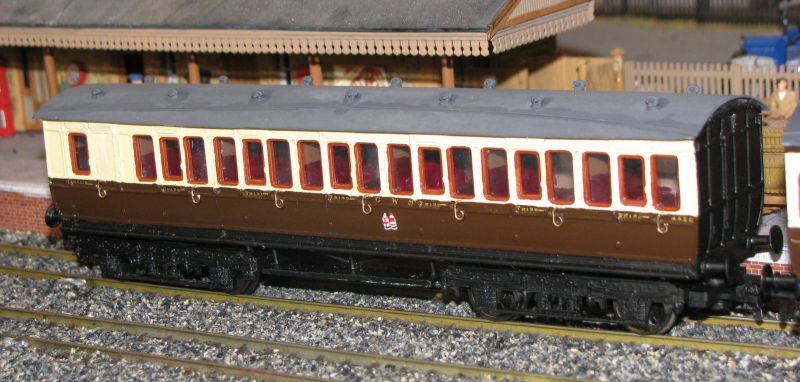
Ex-M&SWJR brake 3rd No 4650
This ex-M&SWJR brake 3rd No 4650 was made from a Tri-ang clerestory brake 3rd, adding one extra compartment from the scrapbox and re-positioning the luggage compartment to be closer to the coach end. In the absence of drawings, I used the image of a similar Slater's 0-scale brake 3rd as a guide to the compartment pattern and matched the overall length to that of the all-3rd.
I could not find the correct 8' wheelbase bogies as readily available kits or spares, so used the BR ones supplied by Tri-ang, but with modern Hornby 12.5mm wheels (so as to give the correct buffer and coupling heights).
The generic Tri-ang buffers were replaced with brass coach buffers.
The coach ends were reshaped a little to give the correct curve for the new roof.
Compartment walls were made from polystyrene sheet, curved to match the ends, so as to support the new roof along its length.
The roof was fabricated from 300 gsm card stock and curved around a dowel rolled against my thigh. (Sounds odd, but it works!)
New torpedo vents were affixed with Superglue. Rainstrips were made from 0.3mm dia nickel silver and Superglued to the card.
Painting and transfer details were the same as for No.4496.
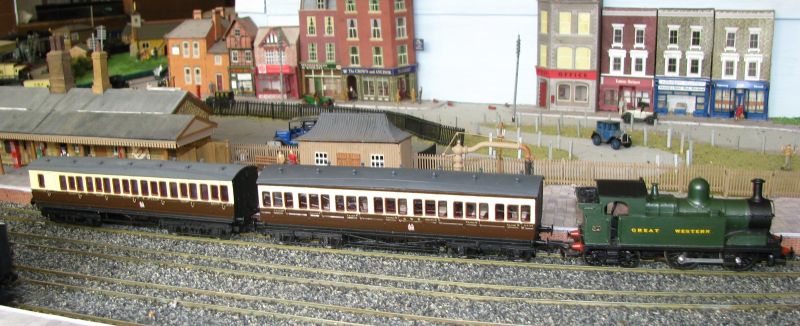
|









